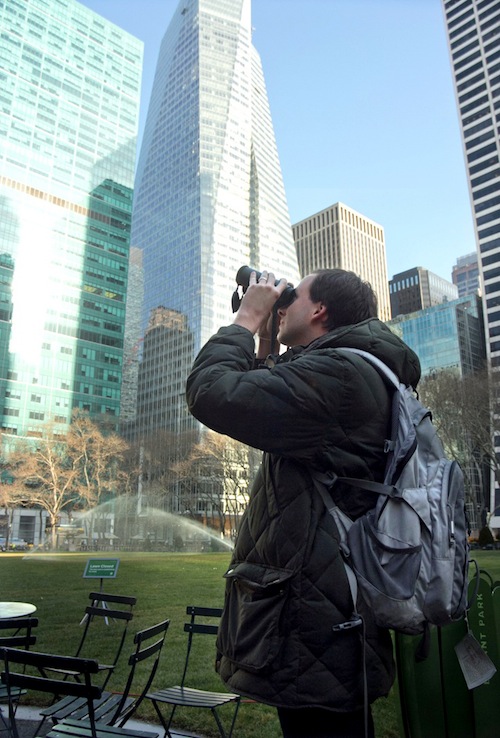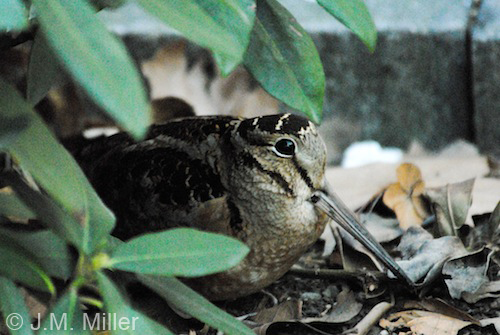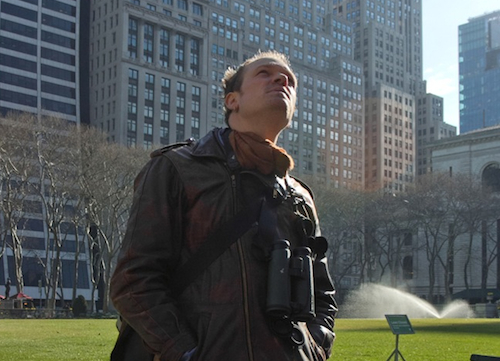
Birding in Bryant Park
April 11, 2013

This turned out to be far better than I’d hoped. Partly due to this odd creature:

The guide was this excellent person:

One of the beauties of being out in nature and exploring birds is it can take you out of your own city concerns sometimes, and transport you a bit into their world. So you just sort of lose track of time. You’re in a little reverie, watching the woodcock rooting around for worms or something, and it’s really interesting, trying to think how they experience this landscape. And you see a lot in Bryant Park. You just have to open your eyes and look carefully.
It’s the other lovely thing about this pastime: it enhances your powers of observation and your sense of the possible and the unlikely, because you never know what you’re going to find. We saw half a dozen people go by that woodcock, totally oblivious, walking to work. And if they were aware, how might it make their day a little more interesting, to see this incredibly improbable bird? And the more you know about the bird’s story, the more meaning it has.
More of Willow’s good work in tracking urban ecology here. Bryant Park birding schedule here. More than you maybe wanted to know about the woodcock’s scientific name here.
It’s the other lovely thing about this pastime: it enhances your powers of observation and your sense of the possible and the unlikely, because you never know what you’re going to find. We saw half a dozen people go by that woodcock, totally oblivious, walking to work. And if they were aware, how might it make their day a little more interesting, to see this incredibly improbable bird? And the more you know about the bird’s story, the more meaning it has.




